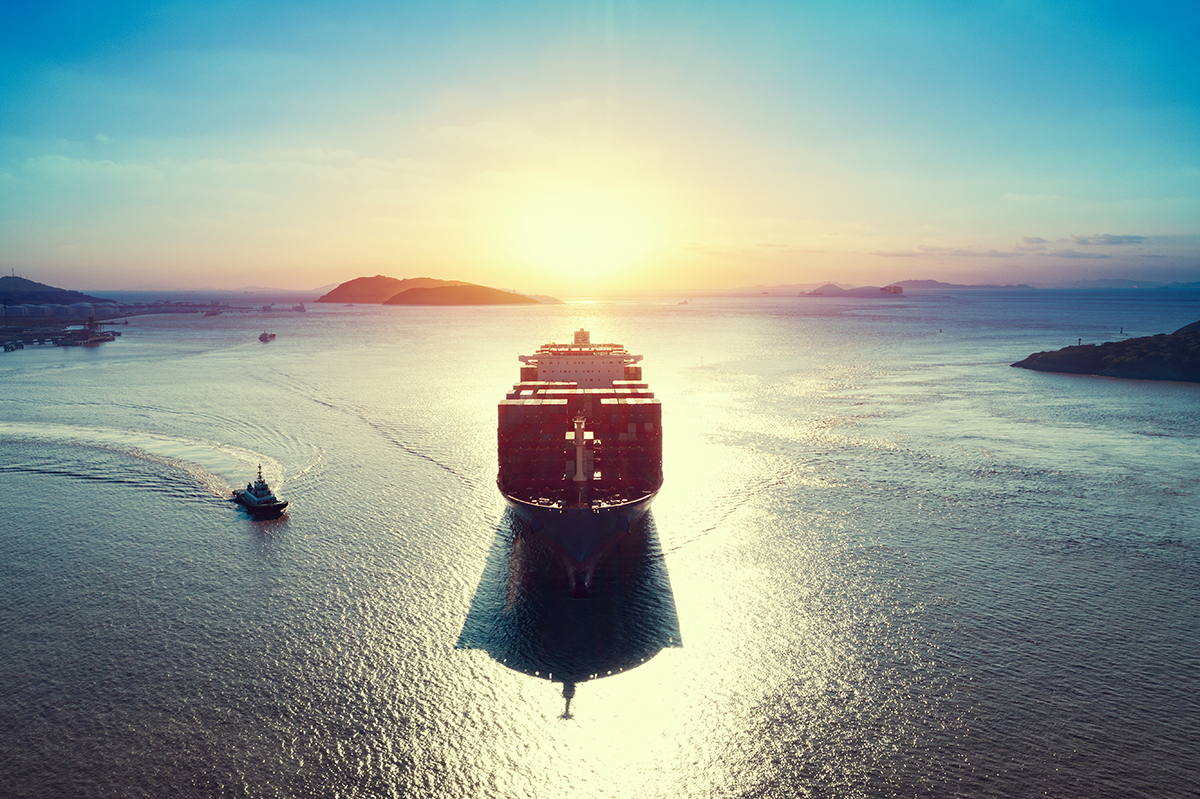Decarbonizing maritime shipping
In his speech to the COP26 climate summit, Tuvalu foreign minister Simon Kofe showed the world what was at stake if it failed to decarbonize. He delivered his United Nations address in a suit, behind a lectern, knee deep in ocean water that was flooding his island as a result of rising sea levels. The survival of entire nations is the cost of inaction.
The need to reduce carbon emissions has been clear for at least a couple of decades, and more recently, a priority for a growing number of businesses and nations. Our company, Infosys, started our own decarbonization journey in 2008 and turned carbon neutral in 2020. For other businesses and sectors, this effort has been far more difficult. One critical industry, maritime shipping, is starting to find ways around those traditional barriers and take concrete steps to reduce its carbon footprint.

Maritime shipping accounts for about 3% of global carbon emissions. If it were a country, this sector would be the sixth-largest carbon emitter, just behind Japan. Aside from risk to coastal regions, carbon emissions have a direct impact on raising the ocean's acidity and threatens marine biodiversity. Increased ocean acidity decreases the availability of carbonate ions that shellfish and corals rely on to build shells and skeletons for survival. These organisms play an important role in the food web by supporting tiny krill to enormous blue whales. The economic cost of ocean acidification is projected to reach over $300 billion per year.
Efforts to decarbonize pose risks, both environmental and economic, due to maritime shipping's vital position in the global economy. About 80% of trade by volume and more than 70% by value is transported across water into ports worldwide. And maritime freight volume is projected to triple by 2050 as many countries strive to reach carbon neutrality.
As the industry tries to meet growing cargo volumes, firms will be faced with increasing pressure from regulators, partners, and clients. Amazon (world's largest retailer outside of China) and Ikea (world's largest furniture retailer) have pledged to use only maritime operators powered by zero-carbon fuel by 2040. Policymakers' calls to decarbonize maritime shipping are adding to the pressure. To align maritime shipping with the Paris Agreement goals, the Aspen Institute has urged governments to commit to ambitious fuel targets, create new regulations, and implement market-based measures to spur innovation in fuel and technology.
Shipping companies are answering the call with ambitious efforts to both decarbonize and meet their expected service levels. For example, Maersk-the world's largest container shipping company-has set a target to reduce carbon emissions 60% by 2030 and to be carbon neutral by 2050. The Getting to Zero Coalition, an alliance of 150 companies, is pushing for the development and deployment of zero emissions vessels by 2030. Shipping must use every tool at its disposal to decarbonize rapidly. Without action, their emissions would increase by a projected 250%.
Shipping companies are experimenting with hydrogen, methanol, and ammonia as alternative fuels. The rise in conventional fuel prices could be the pressure needed to drive operators toward alternatives. The trend toward larger vessels will also allow ships to reduce emissions per ton of cargo. These solutions offer improvement in carbon emissions but are not sufficient enough to meet international goals.
Batteries for auxiliary power, airfoil sails to capture free wind energy, or even alternative construction materials for containers and ships offer additional opportunities to lower carbon emissions. Beyond these physical changes, data and digital technologies play an essential role in maritime shipping's efforts to decarbonize.
Sensors can capture the enormous amounts of data needed for maritime shipping to use to lower emissions. Digital technology will analyze, understand, and calibrate ship parts and operations to ensure the greatest possible efficiency. Sensors capture windspeed, water currents, and engine efficiency. Then, intelligent systems powered by machine learning move ships into the most energy efficient sailing positions.
Predictive analytics are able to combine operational, geospatial, and social data to chart and optimize routes-minimizing disruptions and maximizing efficiency. Connected systems share critical operational and feedback data throughout and between ships to identify patterns and develop shared intelligence.
Digital twins enable shipping operators to understand the past, optimize the present, and simulate future scenarios through digital models. Modeling and forecasting scenarios will be important for maritime operators to continue improving their carbon footprint. These are digital manifestations of data interacting with the physical world, which gives operators deep understanding of the spatial relationships in context. Digital twins allow operators to simulate disruptions (weather, delays at ports, route changes) to make decisions that lower emissions.
These are only a few of the digital tools that can enable maritime shipping to decarbonize. However, each instance highlights the need for greater data visibility throughout the industry. Maritime shipping has been seen as a follower in adoption of digital technologies. However, over two-thirds of the industry is using digital technology to aid vessel operations and security. The industry now needs to turn these tools and data expertise toward the problem of carbon emissions.
Operational data and digital solutions are also vital for tracking and reporting numerous decarbonization metrics demanded by stakeholders, both inside and outside the company. This reporting demonstrates the successes or failures of critical-path programs, ensures continued support and investment, and will be increasingly demanded by regulatory bodies. Infosys's Ecowatch solution supports organizations in these efforts by creating a digital foundation for measuring and improving decarbonization initiatives.
Decarbonizing maritime shipping is not only an environmental responsibility but a sound business opportunity and necessity for survival. Most global companies have set net-zero targets, and it will be imperative for shipping companies to provide logistics that match those goals. Maritime providers that offer such services can gain a competitive edge, earn higher revenue through differential pricing, and increase their market share.
This content was produced by Infosys. It was not written by MIT Technology Review's editorial staff.